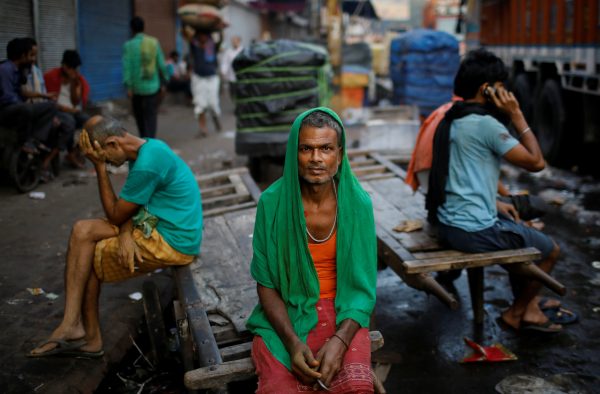With growth rates averaging 7.5 per cent over the past five years, an obvious explanation for the economic slowdown is the possible overheating of the economy and high base year effects. But given that inflation has been moderate during this period, this explanation is incomplete.
A more robust explanation is a shortfall in demand. While government expenditure has expanded considerably, private expenditure (particularly private investment) has been slipping. A powerful explanation for the shortfall is the accumulation of non-performing assets (NPAs) in the Indian banking sector, as well as the policy reaction to address the build-up. In the 2019 fiscal year, the value of NPAs in the Indian banking sector was Rs 1.8 trillion (US$25.3 billion), much more than Rs 9.3 billion (US$130.8 million) in 2017.
Credit growth was squeezed and private investment started to drop. In September 2019, India’s investment rate was 29.7 per cent of its nominal GDP, coming off peaks of more than 34 per cent at the height of the country’s growth boom. Drop-in credit adversely affected businesses, including the critical micro, small and medium enterprises which provide the bulk of India’s formal sector employment. In the very short run, CPI inflation has strayed outside the RBI’s preferred interest rate band but is still below the limit of 6 per cent. The RBI has indicated that its monetary policy stance will remain accommodative.
Policy has reacted expeditiously to these developments. Provision for coverage of NPAs rose from 48.3 per cent of NPAs to 60.6 per cent by March 2019. This has increased the resilience of the banking sector. Concurrently, greater oversight and disciplining of non-banking financial corporations (NBFCs) have brought better performance to this sector. Asset quality concerns have ensured that NBFCs incur higher borrowing costs.
In its June 2019 Financial Stability Report, the RBI indicated that credit growth in the banking sector has picked up. It attributes the growth to several reforms, including legislative measures such as the Bankruptcy Act, enhanced diligence in the provision of bank credit, further capitalisation of some banks and the merger of others. The RBI has cut the standard repo rate repeatedly, which now stands at 5.15 per cent.
RBI governor Shaktikanta Das has indicated that the worst of the liquidity crunch is over and private sector investment is increasing. Foreign direct investment has remained buoyant, rising by 28 per cent between April and June 2019. The current account balance has remained between 2 to 3 per cent of GDP. In other words, the Indian economy’s macroeconomic fundamentals remain strong.
But exports have fallen in light of the global economic slowdown and the US–China trade war, while sluggish domestic growth has reduced import growth. In August 2019, the Finance Minister announced a series of measures designed to stimulate the economy including tax cuts on the super-rich and on corporate profits. In total, the stimulus package was worth US$20 billion.
It is widely expected that the first regular budget of Prime Minister Narendra Modi’s second term, which will be delivered in February 2020, will contain further stimulative measures. This might mean that the government misses its fiscal deficit target by a small margin.
India has moved up 14 places in the World Bank’s Ease of Doing Business ranking to 63rd among 190 nations. Still, it failed to achieve the government’s target of 50th place. Despite substantial progress, India still lags in areas such as enforcing contracts and registering property. It takes 58 days and costs on average 7.8 per cent of a property’s value to register it.
India has declined to join the recently concluded Regional Comprehensive Economic Partnership (RCEP). A government rationale was that the short-term adjustment costs associated with joining RCEP were too high in light of the country’s weak social safety nets.
Even so, health indicators in India are improving steadily which augurs well for future productivity gains. The Modi government’s flagship program, Ayushman Bharat-Pradhan Mantri Jan Arogya Yojana — touted as the world’s largest government-funded healthcare programme — crossed the mark in June of 5 million people treated. Free secondary and tertiary treatment valued at Rs 79 billion (US$1.1 billion) has taken place in the various state and union territories where the program has been implemented.
The Indian economy is gradually recovering from a period of slowdown. Growth prospects look promising for 2020 and beyond. Both monetary and fiscal policy are stimulative and GST collections during November and December have improved substantially, indicating a pick-up in business activity. Steady structural reforms are creating conditions for an improvement in labour productivity. India has set a target of becoming a US$5 trillion economy by 2024–25. Still, given the current slowdown, further productivity gains and stimulative measures will be needed to attain this goal.
Raghbendra Jha is Professor of Economics at the Crawford School of Public Policy, The Australian National University.
This article is part of an EAF special feature series on 2019 in review and the year ahead.

